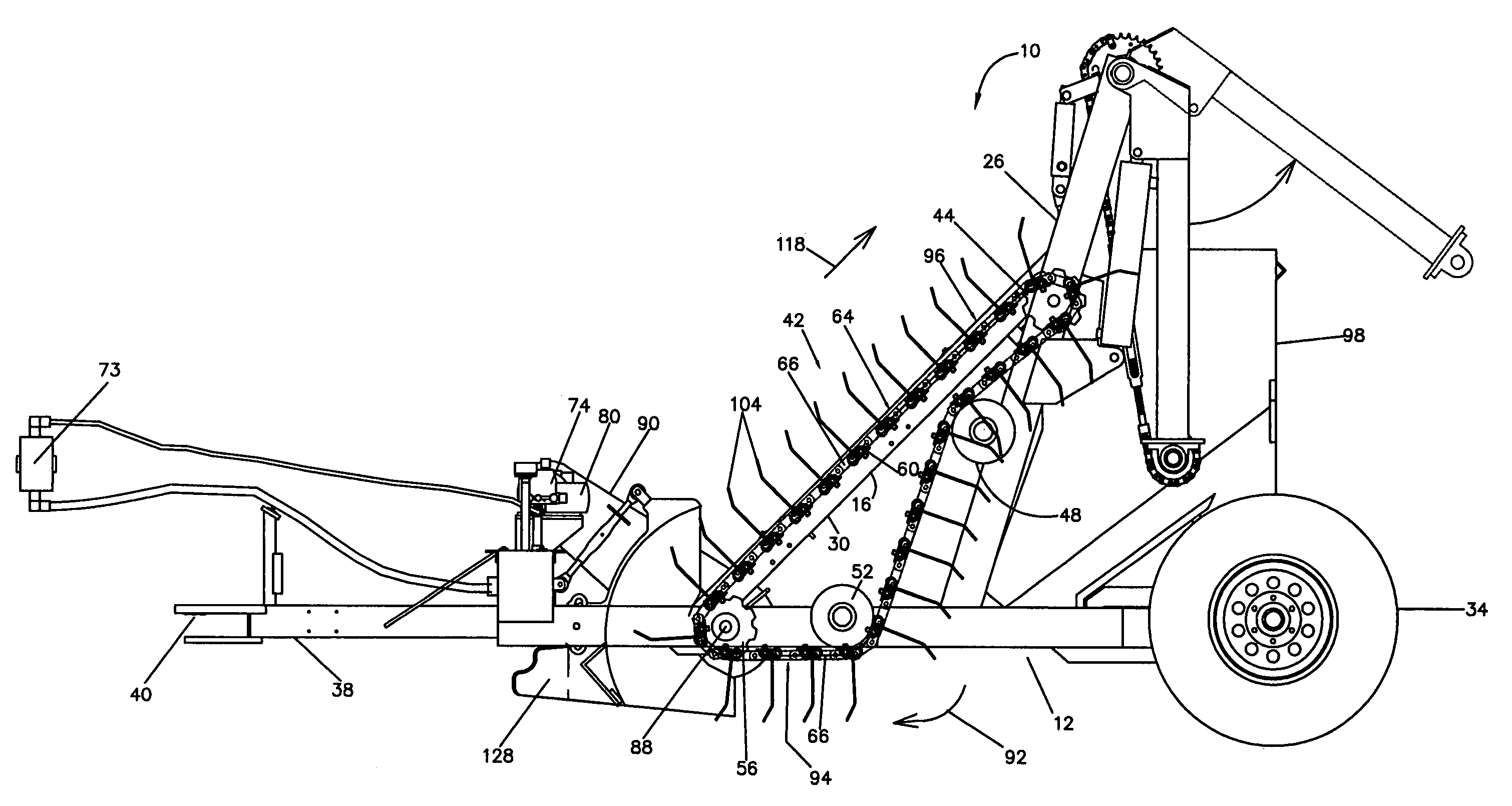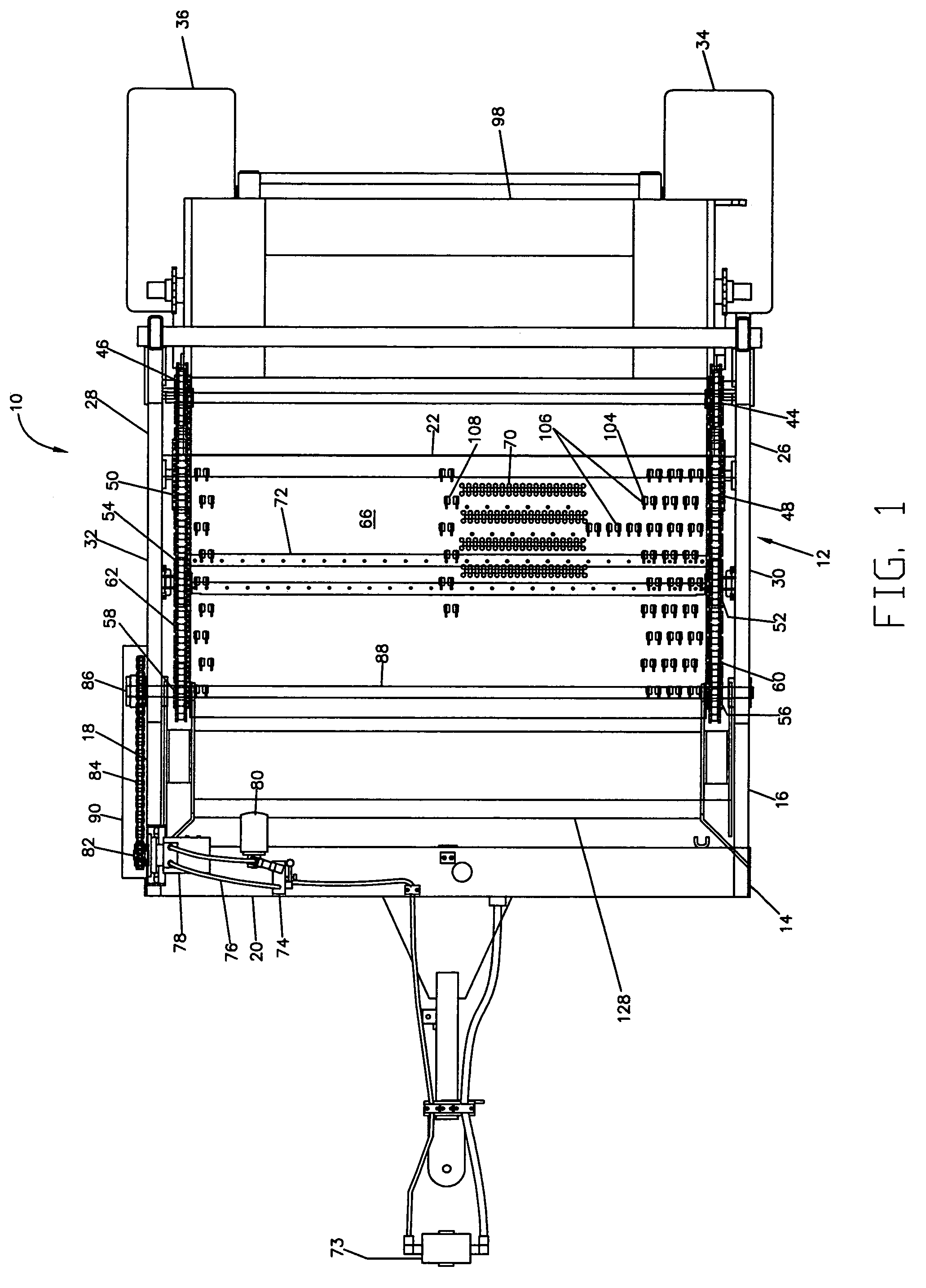Tine raking device
a raking device and a technology for unwanted debris, applied in the field of unwanted debris separation, can solve the problems of unnecessary removal of sand, and achieve the effects of reducing the amount of sand adhering, facilitating the subsequent separation of debris and sand, and further enhancing the separation process
- Summary
- Abstract
- Description
- Claims
- Application Information
AI Technical Summary
Benefits of technology
Problems solved by technology
Method used
Image
Examples
Embodiment Construction
[0023]With reference to FIG. 1 and 2, a tine raking device embodying the present invention is generally indicated by the reference number 10. The device 10 includes a generally rectangularly shaped, perimetric base frame 12 suitably formed of beam members generally designated 14 such as angle, channel iron or tubing. The frame 12 has a pair of spaced side frame members 16 and 18 that are terminally bridged by front and rear frame members 20 and 22 respectively. A pair of generally triangularly shaped conveyor frame assemblies formed of rectangular tubing are mounted upon a rear half of the side frame members 16 and 18 and extend upwardly therefrom. The conveyor frame assemblies include an upwardly or generally vertically disposed conveyor frame members 26 and 28 mounted at a rear of each of the side frame members 16, 18. The conveyor frame assemblies also include generally angularly disposed brace members 30 and 32 respectively coupled at one end to the conveyor frame members 26 and...
PUM
 Login to View More
Login to View More Abstract
Description
Claims
Application Information
 Login to View More
Login to View More - R&D
- Intellectual Property
- Life Sciences
- Materials
- Tech Scout
- Unparalleled Data Quality
- Higher Quality Content
- 60% Fewer Hallucinations
Browse by: Latest US Patents, China's latest patents, Technical Efficacy Thesaurus, Application Domain, Technology Topic, Popular Technical Reports.
© 2025 PatSnap. All rights reserved.Legal|Privacy policy|Modern Slavery Act Transparency Statement|Sitemap|About US| Contact US: help@patsnap.com



